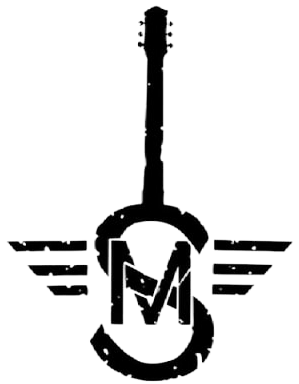How do you destroy bacteria in spore?
A process called sterilization destroys spores and bacteria. It is done at high temperature and under high pressure. In health care settings, sterilization of instruments is usually done using a machine called an autoclave.
What is the role of antiseptics in bacterial infection?
Antiseptics are substances that help to stop the growth of microorganisms on the skin. They’re used daily in medical settings to reduce the risk of infection and stop the spread of germs.
Which chemical is used for killing bacteria?
Hydrogen peroxide is active against a wide range of microorganisms, including bacteria, yeasts, fungi, viruses, and spores 78, 654. A 0.5% accelerated hydrogen peroxide demonstrated bactericidal and virucidal activity in 1 minute and mycobactericidal and fungicidal activity in 5 minutes 656.
What solution that kills microorganisms called?
Antiseptic: Substance that prevents or arrests the growth or action of microorganisms by inhibiting their activity or by destroying them. The term is used especially for preparations applied topically to living tissue.
What are vegetative cells in bacteria?
Vegetative cells are any cells of the body except those which take part in the production of gametes. These cells are produced from the cells which pre-exist through the process of asexual reproduction. In bacteria, the normal living cells are vegetative cells.
How can spore forming bacteria be prevented?
Incoming fresh water. Ensuring the cleanliness of raw materials is one of the keys to effective bacterial spore control on paper and board machines. Raw water treatment is the crucial first step as both mature spores and bacteria that can form into a spore can enter the process with fresh water.
What is an antiseptic used for?
Antiseptics, or skin disinfectants, are chemicals for cleaning the skin and wounds. They can kill or prevent the growth of microorganisms.
How do antiseptics affect bacterial growth?
According to Dr. Alfa, skin antiseptics act in different ways. For example, they can target cell walls, which can cause them to “burst their guts” or they can also inhibit fatty acid synthesis so the bacteria can’t replicate and eventually dies.
What are the examples of antiseptics?
Antiseptic agents in dermatologic surgery commonly include chlorhexidine, povidone-iodine, chloroxylenol, isopropyl alcohol, hexachlorophene, benzalkonium chloride, and hydrogen peroxide.
Which of the following are chemical products that destroy most bacteria?
Chapter 5 Infection Control
| Question | Answer |
|---|---|
| An item that can be disinfected. | disinfectable |
| Chemical agents that destroy most bacteria, fungi and viruses, but not spores on surfaces | disinfectants |
| Process that eliminates most microorganisms, but is not effective against bacterial spores. | disinfection |
Which of the following is used as an antiseptic?
Solution : Iodine is used as an antiseptic in tincture of iodine.
What are vegetative cells called?
Endospores are the dormant type of cells that regrow into a new bacterium when the environmental conditions become favorable. The vegetative cells of the multicellular organisms are called somatic cells. The vegetative cells of the fungi form fungal hyphae.
What is the other name of vegetative cell?
Also found in: Dictionary, Medical, Wikipedia. target cell stem cell mastocyte mast cell labrocyte hybridoma neuroglial cell neurogliacyte somatic cell vegetative…
What is a spore forming bacteria?
Spore-forming bacteria include Bacillus (aerobic) and Clostridium (anaerobic) species. The spores of these species are dormant bodies that carry all the genetic material as is found in the vegetative form, but do not have an active metabolism.
Which of the following is the complete removal of microorganisms and their spores?
Sterilization describes a process that destroys or eliminates all forms of microbial life and is carried out in health-care facilities by physical or chemical methods.
Which of the following is used as antiseptic?
What is antiseptic give example?
Antiseptics are the chemical drugs which either kill or prevent the growth of microorganisms. They are applied selectively to living tissues such as wounds, cuts, ulcers, and diseased skin surfaces. Examples are : -Furacin and soframycin are antiseptics.
Which one is the type of antiseptic?
Some common types of antiseptics include: alcohols, such as isopropyl alcohol and ethyl alcohol. quaternary ammonium compound. chlorhexidine and other diguanides, for use before operations.
What is difference between antiseptic and disinfectant?
The Difference between Disinfectants and Antiseptics
Disinfectants and antiseptics are both used for killing the microbes but still, there is a difference between them. An antiseptic is used for killing the microbes on the living tissues whereas a disinfectant is applied on a non-living object.
Which of the following is not an example of antiseptics?
Solution. Explanation: Antiseptic drugs do not include sulphur dioxide. They are antimicrobial substances that are applied to living tissue or skin to prevent infection.
What is the vegetative form of a bacteria?
Bacteria can live in a vegetative state in which they can grow and reproduce. Few of them can also exist in spore form which is unable to grow or reproduce but can help the bacteria to survive in an environment that is unfavourable for growth.
What is the meaning of vegetative bacteria?
(vejĕ-tā-tiv bak-tērē-ă) The growing form of bacteria.
What is meaning by vegetative?
Definition of vegetative
1 : relating to, composed of, or suggesting vegetation. 2 : of or relating to the division of nature comprising the plant kingdom. 3 : leading a dull, monotonous, or passive existence : vegetable entry 2 sense 3.
What are vegetative bacteria?
What is an example of bacterial spores?
Examples of spore-forming bacteria
botulinum (a potential agent of bioterrorism), and C. tetani are the causative agents of gas gangrene, botulism, and tetanus, respectively. Bacillus anthracis and Bacillus cereus are the causative agents of anthrax and self-limiting food poisoning, respectively.
